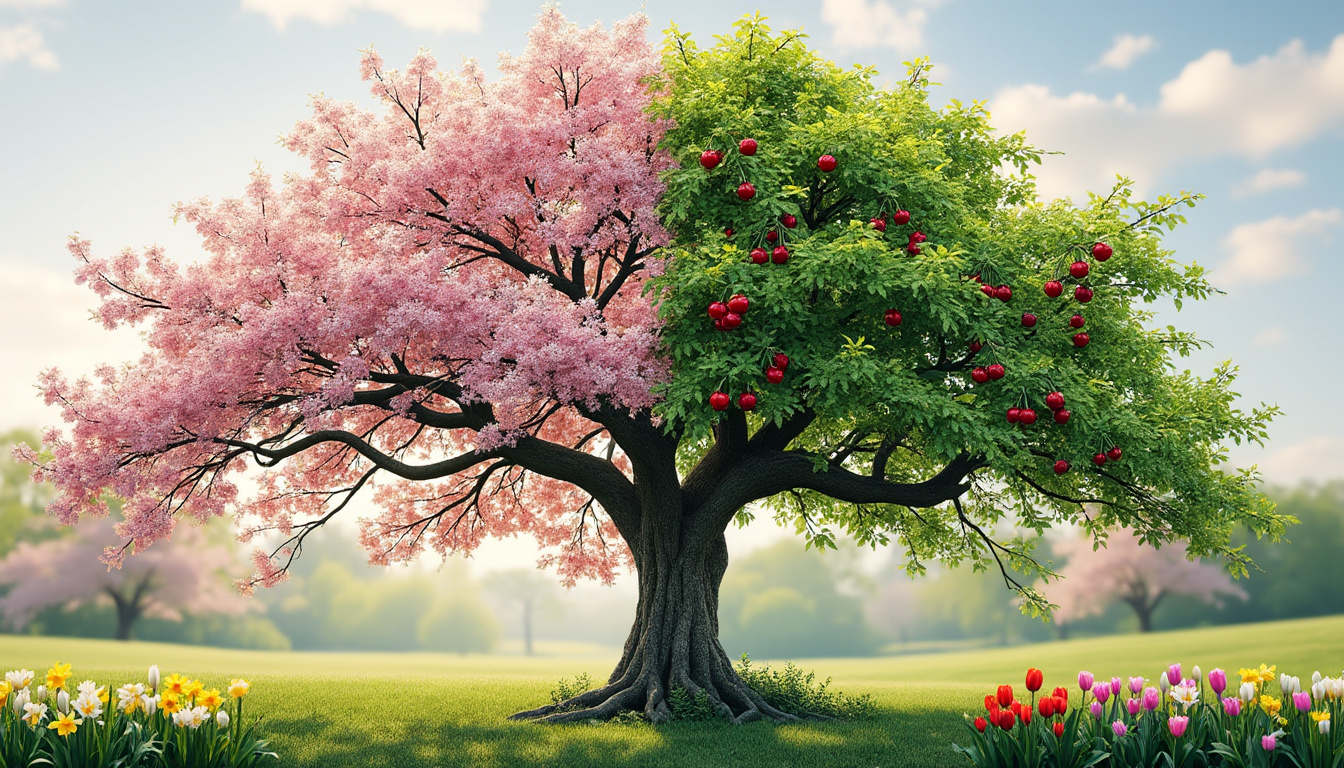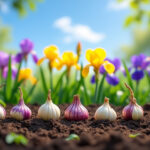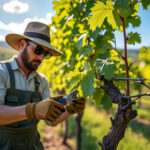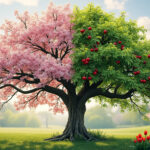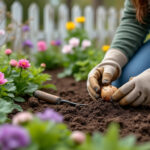This article delves into the intricacies of pruning cherry trees for optimal growth, covering essential timings, techniques, tools, and benefits that contribute to healthier trees and abundant fruit yields. Understanding the nuances of cherry tree care is crucial for any gardener aiming to cultivate thriving and productive trees in their landscape.
Understanding When to Prune Cherry Trees for Maximum Growth
Determining the optimal timing for pruning cherry trees is essential for promoting their health and productivity. The best periods for pruning cherry trees generally fall into two categories: dormant season pruning and post-bloom pruning. Each approach serves specific purposes and fosters different outcomes.
Pruning During Dormant Season
The dormant season, typically spanning late winter to early spring, is widely regarded as the ideal time for pruning cherry trees. During this period, trees are not actively growing, which minimizes stress and allows for more significant healing following cuts. Pruning in this timeframe encourages robust growth as trees prepare for new leaves and blossoms in the spring.
- 🌸 Benefits of Dormant Season Pruning:
- Improved air circulation and sunlight exposure
- Reduction in the likelihood of disease and pest infestations
- Upon inspection, one can easily identify dead, diseased, or crossing branches
By removing these compromised branches during winter months, gardeners can establish a solid foundation that promotes energy redirection towards developing stronger and healthier branches. This strategy enhances the overall structural integrity of the tree, allowing it to thrive as it enters its active growing season.
Post-Bloom Pruning
Another critical period for pruning cherry trees occurs immediately after blooming. This approach focuses on maintaining healthy fruit production. After flowering, the tree’s energy can be directed more effectively toward the development of fruit rather than sustaining spent blossoms.
Steps to Follow:
- 🌱 Assess the tree’s overall health and appearance after blooming.
- 🚫 Remove any lingering or spent blossoms to encourage fruit growth.
- 🌟 Ensure to leave adequate foliage on the tree to support remaining fruit production.
Post-bloom pruning helps to maintain a balance between foliage and fruit, preventing overcrowding and promoting better air circulation, which is crucial for achieving quality cherries.
| Pruning Timing | Benefits |
|---|---|
| Dormant Season (Late Winter – Early Spring) | Minimizes stress, enhances light exposure, improves circulation. |
| Post-Bloom (Early Spring) | Redirects energy towards fruit development, improves quality. |
Incorporating both pruning methods into a routine care schedule ensures cherry trees remain healthy and productive, leveraging the advantages offered by each timing strategy.
Essential Tools for Effective Cherry Tree Pruning
Utilizing proper tools for pruning is fundamental to executing effective and efficient cherry tree care. Each tool serves a specific purpose and contributes to achieving clean cuts, essential for promoting tree health.
Overview of Essential Pruning Tools
The right tools can make all the difference in how effectively a gardener can prune cherry trees. Here’s a breakdown of must-have tools along with their respective functions:
- 🔪 Pruning Shears: Ideal for clean cuts on smaller branches.
- 🪓 Loppers: Perfect for cutting thicker branches up to two inches in diameter.
- 🪚 Hand Saw: Used for larger branches that are too thick for loppers.
- 📏 Tree Pruner: Allows safe access to high branches.
- 🧤 Protective Gear: Gloves and safety glasses for personal safety.
Some tools like loppers provide the leverage needed for cutting thicker branches while pruning shears focus on precision. Ensuring that all tools are kept sharp and well-maintained is crucial for facilitating seamless cuts and reducing the risk of damaging the tree.
Understanding the Benefits of Pruning Cherry Trees
Regularly pruning cherry trees offers numerous benefits that enhance both health and productivity. Identifying and understanding these advantages often encourages gardeners to prioritize pruning as a critical gardening activity.
Promoting Healthier Growth
One of the most significant benefits of pruning is promoting healthier tree growth. By removing dead and diseased branches, light can penetrate better, and air circulation improves significantly.
- 🌿 Improved Leaf Development: Enhanced sunlight exposure leads to robust foliage growth.
- 🤒 Resistance to Pests: Healthy trees show increased resilience against diseases and infestations.
- 🍒 Fruiting Yields: Focusing the tree’s energy on fewer, healthier buds results in larger cherries.
By creating an environment conducive to healthy growth, regular pruning ensures trees are equipped to combat threats to their health effectively.
Increasing Fruit Production
In addition to promoting overall health, pruning vastly enhances fruit production capabilities. Cherry trees focus their energy on remaining buds instead of struggling to maintain overcrowded branches, leading to more fruitful harvests.
- 🌱 Thinning Crowded Branches: This prevents decay and promotes air circulation, which is essential for ripening fruit.
- 📊 Concentration of Nutrients: Directing nutrients towards fewer branches results in higher quality cherries.
- 💧 Efficient Resource Use: Optimizing how the tree uses sunlight and water ultimately encourages productivity.
A well-maintained cherry tree produces more substantial and sweeter fruits, enhancing the gardening experience and yielding an abundance of homegrown cherries.
| Pruning Benefits | Description |
|---|---|
| Healthier Growth 🍃 | Removes compromised branches to improve light access and air flow. |
| Increased Fruit Production 🍒 | Directs energy to fewer buds, enhancing the size and sweetness of the harvest. |
| Enhanced Aesthetic Appeal 🌼 | Creates a vibrant landscape display with a balanced tree structure. |
Ultimately, understanding the myriad benefits of pruning strengthens the commitment to regular tree maintenance, which is fundamental for achieving a thriving garden landscape.
When to harvest maincrop potatoes for the best yield
Step-by-step Guide on How to Prune a Cherry Tree Effectively
Successfully pruning a cherry tree requires careful and methodical steps to ensure the process is effective while promoting future growth. By adhering to a clear guide, gardeners can enhance their pruning skills and boost tree health.
Assessing the Tree Before Pruning
- 👩🌾 Weak or Crossing Branches: Identify branches that could hinder growth.
- 💔 Dead or Diseased Limbs: Look for discoloration or lack of leaves on certain limbs.
- 🧭 Overall Shape: Focus on establishing an open center for better airflow.
Taking notes on the areas that require pruning helps create a structured approach, allowing for efficiency during the actual pruning process.
Making the Cuts
When making cuts, precision is vital to promote faster healing and minimize damage. Follow these steps for effective pruning:
- ⚔️ Start with Dead or Diseased Wood: Remove these branches first.
- ✂️ Trim Weak Limbs: Focus on limbs that impede growth.
- 📐 Shape the Tree: Maintain an open canopy while removing overly vertical branches.
- 🛠️ Keep Cuts Clean: Use tools to minimize tearing of bark for faster healing.
- ❗ Limit Cuts: Avoid removing more than 30% of the tree to prevent shock.
Making clean cuts fosters healthier healing and minimizes the risk of introducing pests or diseases into the tree.
| Pruning Steps | Details |
|---|---|
| Assess the Tree 🧐 | Look for unhealthy branches and overall shape. |
| Make Clean Cuts ✂️ | Focus on dead wood first and ensure minimal tearing. |
| Clean Up Debris 🧹 | Proper disposal prevents potential disease spread. |
Carefully implementing these steps will yield well-maintained cherry trees that thrive under diligent care.
Avoiding Common Pruning Mistakes
While pruning cherry trees is essential, common mistakes occur during this practice that can undermine the tree’s health. Recognizing and avoiding these pitfalls ensures favorable outcomes.
Over-Pruning Risks
One of the primary pitfalls is over-pruning. Removing too many branches can severely stress a cherry tree, leading to stunted growth or even death. To avoid this, it’s advisable to:
- 🚫 Limit prunings to 30% of the tree’s growth in one season.
- 🔍 Focus on dead and diseased branches first.
- 📏 Regularly assess tree structure before cutting.
Implementing a sensible approach towards pruning helps preserve the tree’s vitality while allowing for healthy growth.
Neglecting the Natural Structure
Another common mistake involves overlooking the tree’s natural growth patterns. Preserving the inherent shape of a cherry tree is crucial to maintaining balance and preventing damage.
- 🌳 Identify main limbs that contribute to the tree’s structure.
- 📐 Retain symmetry to prevent uneven weight distribution.
- 🛠️ Cuts should support maintaining the tree’s established formation.
Doing so will bolster the tree’s resilience against environmental pressures and promote longevity.
| Common Mistakes | Consequences |
|---|---|
| Over-Pruning 🚫 | Stressed tree, risk of death. |
| Neglecting Structure 🦠 | Imbalanced tree, increased storm damage risk. |
| Improper Timing | Poor fruit yield, increased diseases. |
Addressing these common mistakes will lead to healthier and more fruitful cherry trees in the home garden.
Frequently Asked Questions
Understanding the nuances of pruning cherry trees often leads to questions that can benefit gardeners. Here are some frequently asked queries along with their answers:
- When is the best time to prune cherry trees? Prune in late winter or early spring before any new growth appears.
- What tools are necessary for pruning? Essential tools include sharp hand pruners, loppers, and a pruning saw for larger branches.
- How do I assess the health of a cherry tree before pruning? Look for signs of diseases, dead wood, and the tree’s overall structure.
- How can pruning enhance my cherry tree’s fruit production? By directing growth energy to fewer, healthier buds and improving air circulation.
- What should I do with the debris after pruning? Clear away all debris to prevent disease and dispose of any diseased materials properly.

